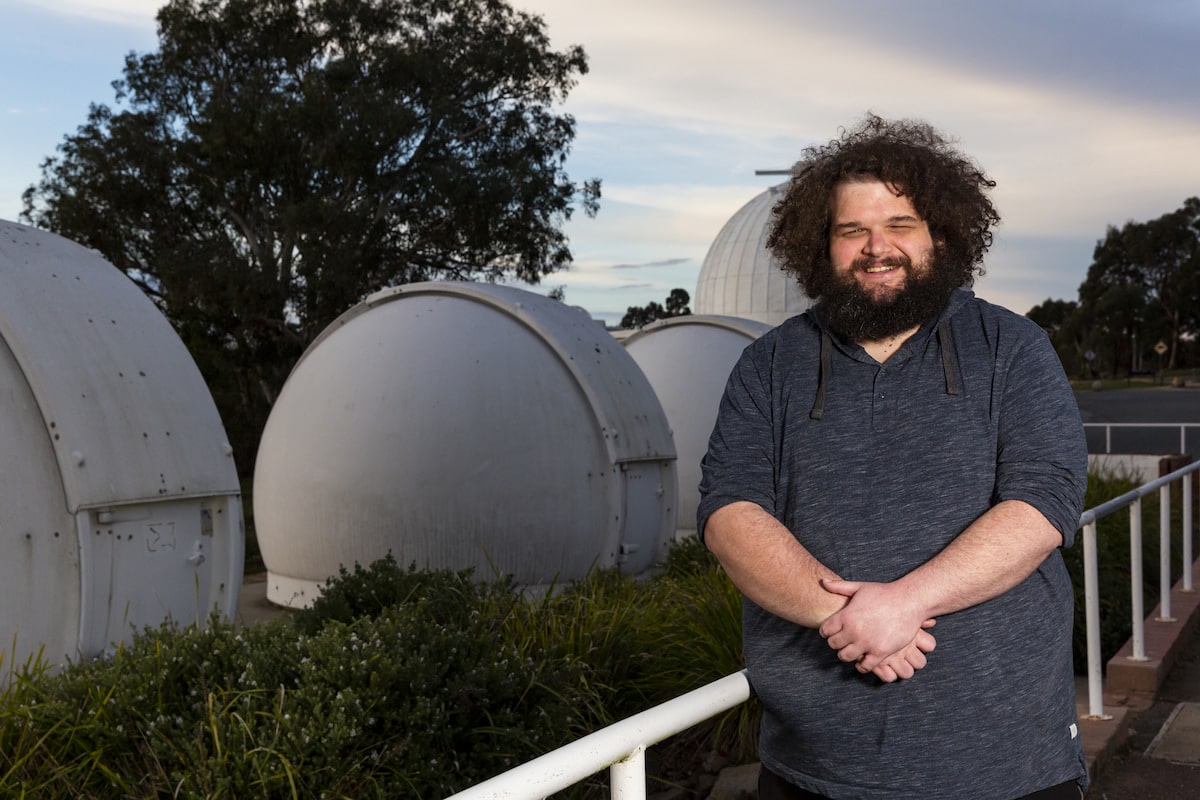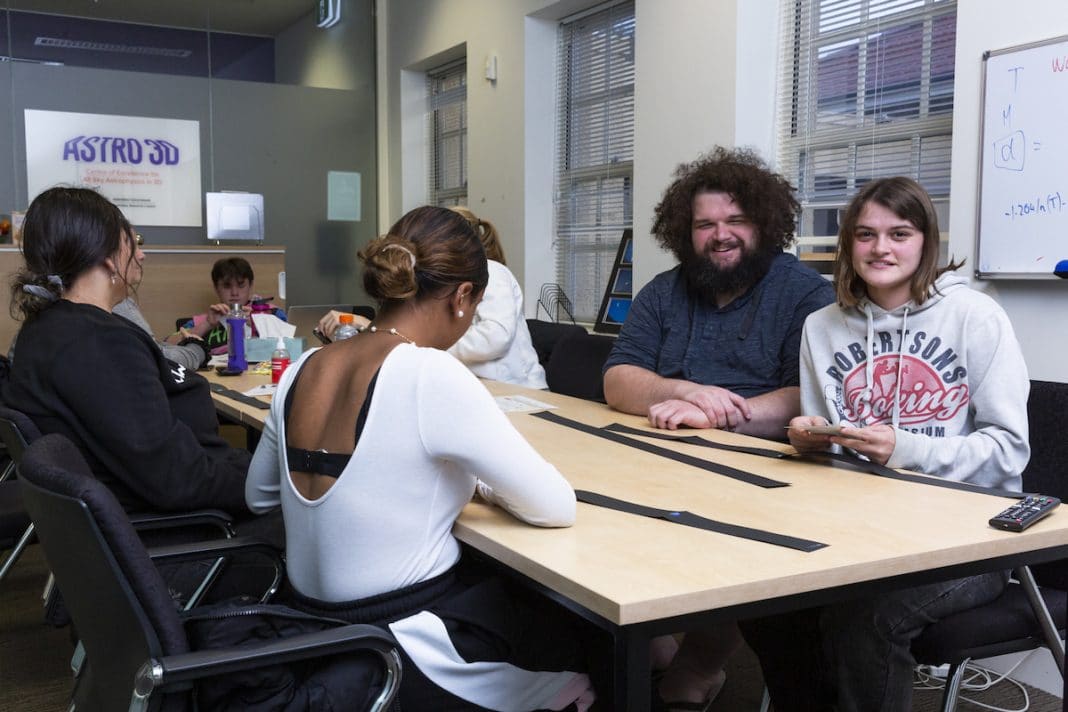“Back when I was at high school and people were saying ‘physics is too hard,’ it was easy to listen because there was nobody like me that did physics,” says Master’s student and Gamilaraay/Yuwaalaraay man, Peter Swanton.
Last week, First Nations high school students travelled from far and wide for an ‘out of this world’ astronomy experience at Mt Stromlo Observatory in the ACT.
The Indigenous Work Experience Program (IWEX) provided year 10 and 11 students from remote and regional NSW and Tasmania a look into astronomy and astrophysics workplaces.
Led by ASTRO 3D and the ANU Research School of Astrophysics and Astronomy, the five-day program placed students under the wing of Indigenous scholars, like Pete, a physics major, with a specialisation in astrophysics.
His five-day proteges came from the regional towns of Bourke, Moree, Canowindra, and Tumbarumba, and others from Devonport, Tasmania, and the Blue Mountains.
Together they built spectroscopes, undertook their own research projects, learnt about Indigenous astronomy, with time saved for yarning circle and stargazing – building connections with one another, and with their mentors.
Pete says it’s “been a slog” bringing the program to life. “It was originally slated for 2020 and it’s just been delay after delay.”
In its inaugural run, IWEX drew eight students in total to Mt Stromlo.
Leah Troy, 16, of Jawoyn tribe in Northern Territory says she was always interested in going to ANU, but the program cemented the fact.
“I’ll definitely go to uni. Astronomy is definitely an opportunity I’ll think about in the future.
“I always knew astronomy played a strong part in Indigenous culture, I’d heard the story about the Emu and the Milky Way, but I’d never thought about it much before. Pete’s talk was eye-opening.”
Back in the winter of 2016, Pete moved from Queensland to Canberra to study astronomy and astrophysics at ANU. At James Cook University, Townsville, 10 years after graduating high school, he tried physics for the very first time.
“I’d avoided physics in high school because everyone told me to. Turns out I’m pretty good at it,” says Pete.
“First high distinction I’d ever gotten at university, despite the fact that I failed out of university three times before that.”
At JCU, Pete was inspired by a Canadian professor who was as passionate about physics as he was about supporting his students, influencing Pete towards the astrophysics path that led to ANU.
However, his desire to teach young mob came long before then, at a high school in Mackay, North Queensland, where he tutored young Indigenous students in maths and science.
“A few years later I was working as a security guard in a nightclub. One of the students that I taught at school, now 18, ran into me at the club and he said, ‘because of you, I actually passed maths that year and got my apprenticeship’. For me, that was a big eye-opening moment.

“Indigenous students are widely underrepresented in every area of academia. It’s not exclusive to astronomy, it’s not even exclusive to STEM.
“It’s particularly areas like this where we should be represented because we’ve got a long history of scientific observations.”
Pete’s research links traditional Indigenous sky knowledge to what is now understood within Western science, “exploring the ways in which these two knowledge systems can communicate with each other”.
“I like to tell a story from South Australia, about the constellation Orion and its star, Betelgeuse.”
Betelgeuse is known as a ‘variable’ star, whose brightness fluctuates.
“The variable properties of Betelgeuse inform a lot of their story telling. It’s embedded in stories that are perhaps thousands of years old, but in Western science, the idea of variable stars has only been explored for the last three or four hundred years.”
Despite being a self-described introvert, Pete shares this knowledge with young mob through programs like IWEX and ASTRO 3D, to show that “someone like them can stand up here and be successful at it”.
“To even get where I am now has been a journey of persistence. The hope is that by putting myself in the public eye, when the next person comes along who wants to do the same thing, the precedent has already been set.
“They’ve just got to worry about pushing beyond me, and forging the path for the person to come after them.”
Canberra Daily would love to hear from you about a story idea in the Canberra and surrounding region. Click here to submit a news tip.



